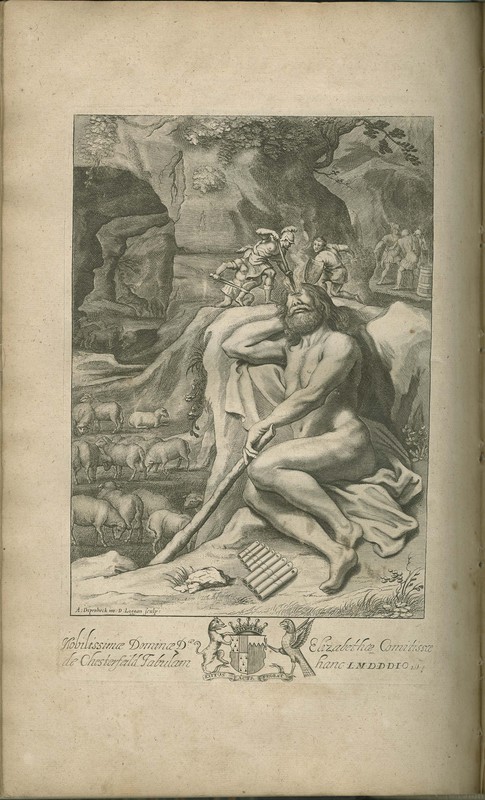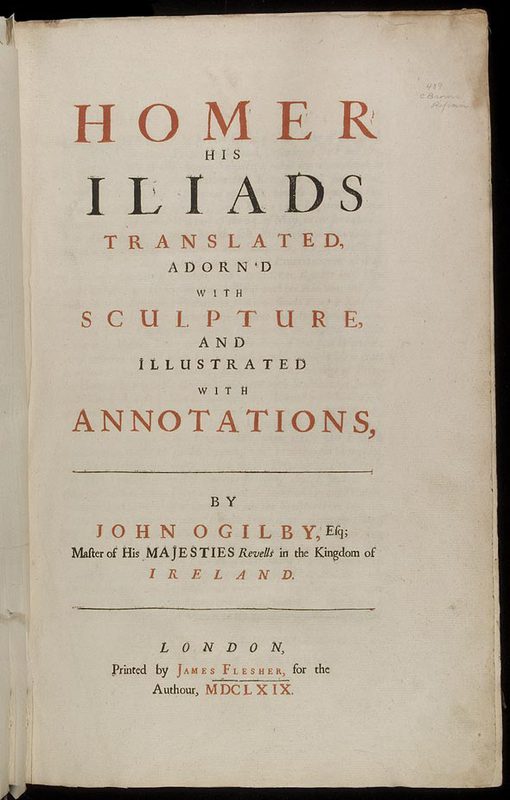Poetry into Images: John Ogilby
Scotsman John Ogilby (1600–1676) lived a diverse and flamboyant life. He was a dancing master, courtier, and theatre owner between 1620 and 1641. In 1633, he moved to Ireland under the patronage of Thomas Wentworth, 1st Earl of Strafford, to become “Master of His Majesties Revells” (a royal office responsible for stage censorship). In 1637, Ogilby opened Ireland’s first theatre, the New Theatre in Dublin's Werburgh Street. With the Irish Rebellion of 1641, however, Ogilby's good fortune changed dramatically. In that same year, his patron, Strafford, was executed, and the governments of the 1640s and 1650s forbade those theatrical productions in which he had been involved. Following service under James Butler, Earl of Ormond, Ogilby returned to England in 1644, first to Bristol, then to Cambridge the next year. By 1648, he was established in London, the city that became the center of his intellectual and commercial endeavors. From 1649 onward, Ogilby devoted his life to the translation of the classics in luxurious editions with illustrations designed by the most accomplished artists of the age. As a publisher, Ogilby successfully funded these expensive volumes by convincing subscribers to pay for the design and engraving of a particular plate, which, in return, included their name and coat-of-arms.

The Englished Homer

Alexander Pope



